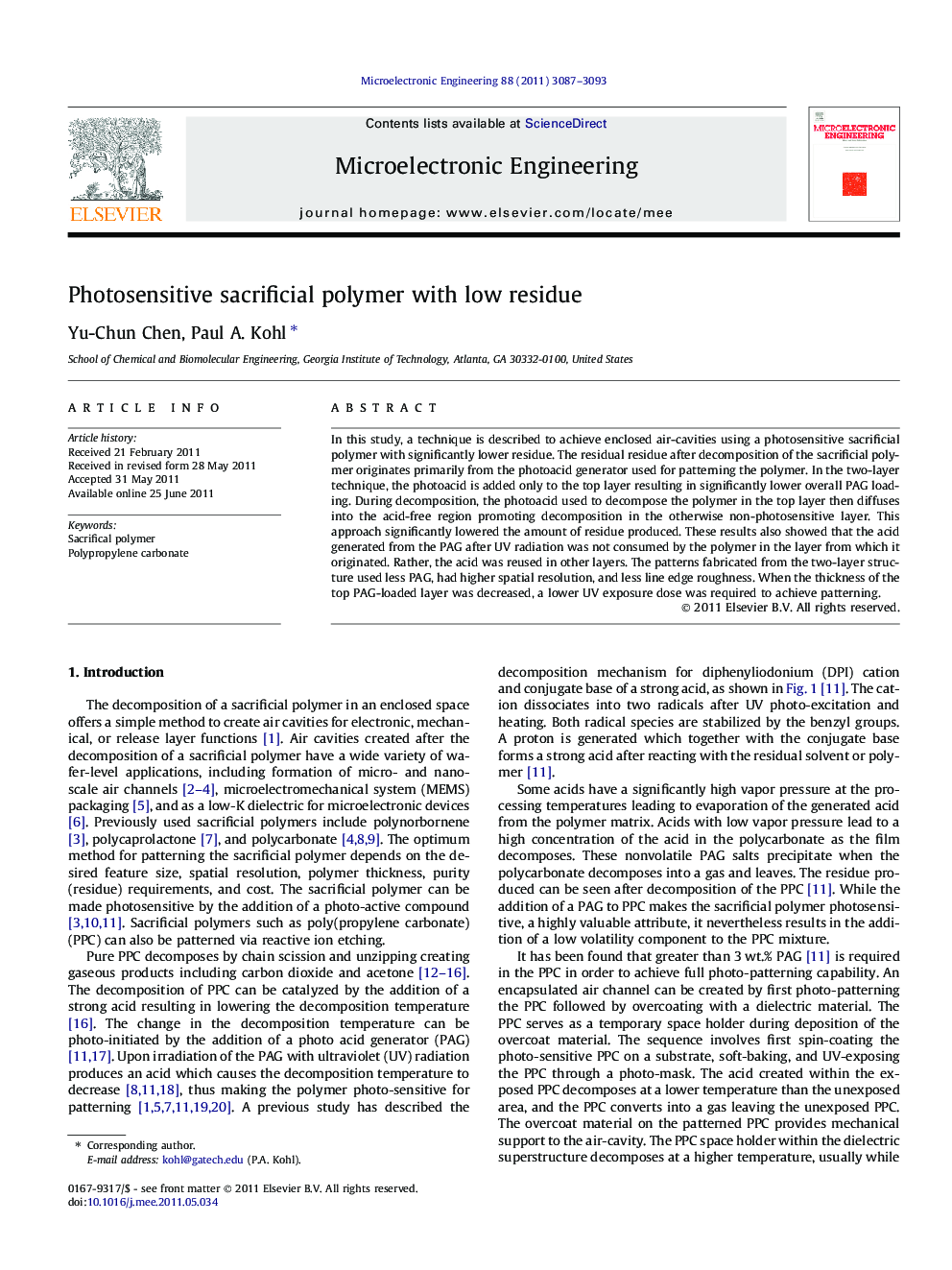| کد مقاله | کد نشریه | سال انتشار | مقاله انگلیسی | نسخه تمام متن |
|---|---|---|---|---|
| 539584 | 871260 | 2011 | 7 صفحه PDF | دانلود رایگان |

In this study, a technique is described to achieve enclosed air-cavities using a photosensitive sacrificial polymer with significantly lower residue. The residual residue after decomposition of the sacrificial polymer originates primarily from the photoacid generator used for patterning the polymer. In the two-layer technique, the photoacid is added only to the top layer resulting in significantly lower overall PAG loading. During decomposition, the photoacid used to decompose the polymer in the top layer then diffuses into the acid-free region promoting decomposition in the otherwise non-photosensitive layer. This approach significantly lowered the amount of residue produced. These results also showed that the acid generated from the PAG after UV radiation was not consumed by the polymer in the layer from which it originated. Rather, the acid was reused in other layers. The patterns fabricated from the two-layer structure used less PAG, had higher spatial resolution, and less line edge roughness. When the thickness of the top PAG-loaded layer was decreased, a lower UV exposure dose was required to achieve patterning.
In this study, a technique is described to achieve enclosed air-cavities using a photosensitive sacrificial polymer with significantly lower residue. The residual resided after decomposition of the sacrificial polymer originates primarily from the photoacid generator used for patterning the polymer. In the twolayer technique, the photoacid is added only to the top layer resulting in significantly lower overall PAG loadings. During decomposition, the photoacid used to decompose the polymer in the top layer then diffuses into the acid-free region promoting decomposition in the otherwise non-photosensitive layer. This approach significantly lowered the amount of residue produced. These results also showed that the acid generated from the PAG after UV radiation was not consumed by the polymer in the layer from which it originated. Rather, the acid was resued in other layers. The patterns fabricated from the two-layer structure used less PAG, had higher spatial resolution, and less line edge roughness. When the thickness of the top PAG-loaded layer was decreased, a lower UV exposure dose was required to achieve patterning.Figure optionsDownload as PowerPoint slide
Journal: Microelectronic Engineering - Volume 88, Issue 10, October 2011, Pages 3087–3093